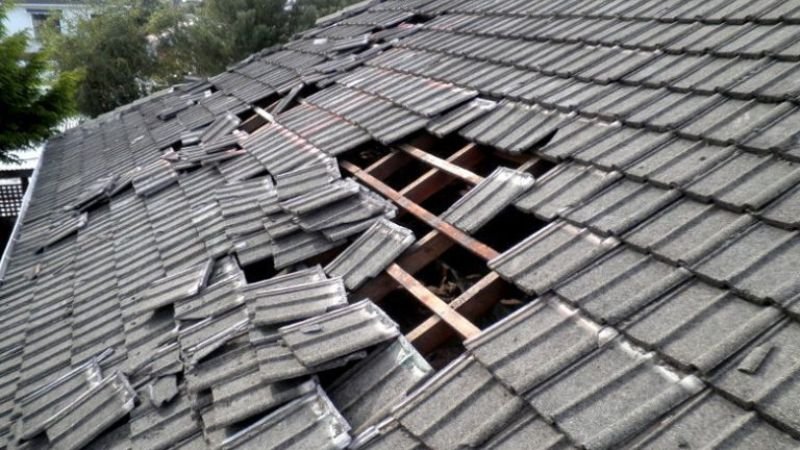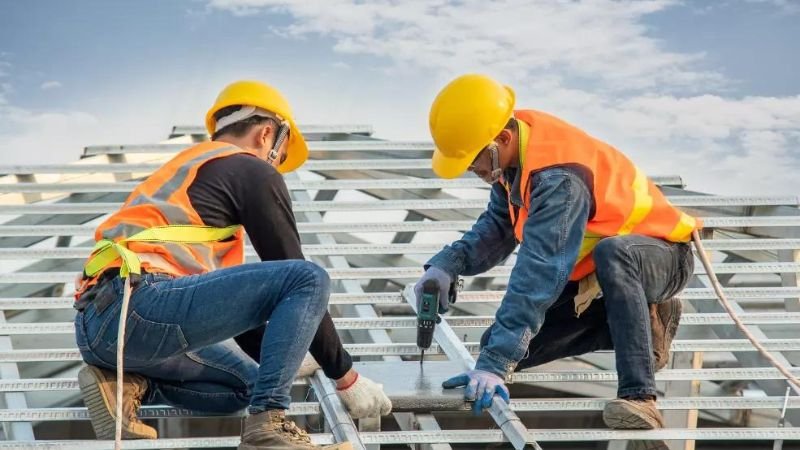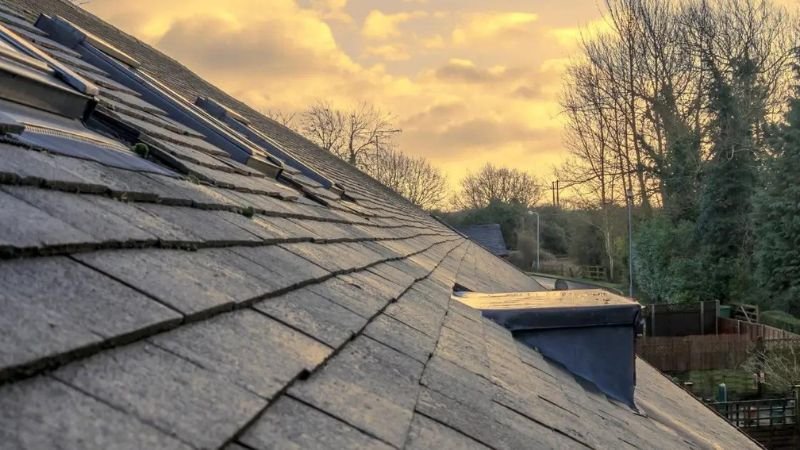Storms can wreak havoc on your home, and the roof often bears the brunt of the damage. Whether it’s high winds, heavy rain, or hail, these elements can cause significant harm to your roof, leading to leaks, structural damage, and costly repairs. As a homeowner, it’s crucial to know how to address storm damage promptly and effectively. In this blog, we’ll cover “The 9 Storm Damage Roof Repair Tips For Homeowners” to help you navigate the aftermath of a storm. From assessing the damage and performing temporary fixes to hiring professional contractors, these tips will ensure your roof is restored to its optimal condition.
The 9 Storm Damage Roof Repair Tips For Homeowners
1. Assess the Damage
After a storm, the first step is to assess the damage to your roof. Start by conducting a thorough inspection from the ground using binoculars to spot any visible damage. Look for missing shingles, dents, or cracks caused by hail, and any debris that may have fallen on the roof. It’s important to be cautious and avoid climbing onto the roof yourself, as it may be unstable and dangerous. Additionally, check for water stains on your ceilings and walls inside the house, which can indicate leaks. Document all damages with photographs and detailed notes. This information will be valuable when filing an insurance claim and when discussing repairs with a professional roofing contractor.
Also, Read – 7 Tips To Deal With Roofing Storm Damage Repairs
2. Contact Your Insurance Company
Once you’ve assessed the damage, it’s time to contact your insurance company. Notify them about the storm damage and provide all the documentation you’ve gathered. Most homeowner insurance policies cover storm damage, but it’s essential to understand your coverage and the claims process. An adjuster from your insurance company will likely visit your home to inspect the damage and estimate repair costs. Keep a record of all communications with your insurance company and any documents they provide. This will help ensure a smooth claims process and that you receive the compensation you need for repairs.
3. Perform Temporary Repairs
While waiting for professional repairs, it’s crucial to perform temporary fixes to prevent further damage. Cover any exposed areas of your roof with waterproof tarps to protect your home from additional rain and moisture. Use roofing cement to seal small holes or cracks temporarily. Clear any debris from your roof and gutters to prevent clogging and water buildup. Be cautious when doing these temporary repairs; avoid walking on the roof if possible, and use a ladder safely. These measures will help minimize additional damage and keep your home dry until permanent repairs can be made.
4. Hire a Professional Roofing Contractor
Choosing the right roofing contractor is vital for quality repairs. Look for a licensed, insured, and experienced contractor with good reviews and references. Obtain multiple estimates to compare costs and services. Ensure the contractor is familiar with handling storm damage and working with insurance claims. Discuss the scope of the repairs, materials to be used, and the timeline for completion. A reliable contractor will provide a detailed written estimate and contract. Hiring a professional ensures that your roof is repaired correctly and can withstand future storms.
Also, Read – 10 Signs You Need To Replace Your Roof
5. Remove Debris Safely
After a storm, debris such as branches, leaves, and other objects may be scattered across your roof. Removing this debris is essential to prevent further damage and allow for proper inspection and repairs. Use a sturdy ladder and wear protective gear when removing debris. Steer clear of sharp objects that can harm your roofing materials. If the debris is extensive or heavy, consider hiring a professional to handle the cleanup safely. Clearing your roof of debris ensures that any damage is visible and accessible for repairs.
6. Check for Hidden Damage
Not all storm damage is immediately visible. Hidden damage, such as leaks, weakened structural components, or damaged underlayment, can worsen over time if not addressed. Have a professional roofing contractor conduct a thorough inspection to identify any hidden issues. They can use advanced tools such as infrared cameras to detect moisture and hidden leaks. Addressing hidden damage promptly prevents further deterioration and ensures the longevity of your roof. Regular inspections after storms can help identify and repair hidden damage before it becomes a major problem.
7. Maintain Your Roof Regularly
Regular maintenance is key to preventing storm damage and extending the lifespan of your roof. Schedule annual inspections with a professional roofing contractor to identify and address potential issues before they become serious problems. Keep your gutters clean and free of debris to prevent water buildup and leaks. Trim overhanging branches to reduce the risk of them falling on your roof during a storm. Replace damaged or missing shingles promptly to maintain the integrity of your roof. Regular maintenance helps your roof withstand severe weather and reduces the need for costly repairs.
8. Understand Your Roofing Materials
Different roofing materials respond differently to storm damage. Understanding the type of roofing material on your home helps you assess damage and determine the best repair methods. Asphalt shingles, for example, may show granule loss, cracks, or curling after a storm. Metal roofs can dent or develop leaks at seams and fasteners. Tile roofs may crack or dislodge. Consult with a professional to understand the specific vulnerabilities and repair needs of your roofing material. Knowing your roofing material helps you make informed decisions about repairs and maintenance.
9. Plan for Future Storms
Preparing for future storms can help protect your roof and home from damage. Consider investing in impact-resistant roofing materials that can withstand hail and high winds. Install storm shutters or reinforce windows to prevent damage from flying debris. Create an emergency plan for your family, including safe shelter areas and communication strategies. Keep important documents, including insurance information, in a safe and accessible place. Regularly review and update your insurance coverage to ensure it meets your needs. Proactive planning and preparation help minimize damage and ensure a quicker recovery after a storm.
Conclusion
Dealing with storm damage to your roof can be daunting, but knowing the right steps to take can make the process much smoother. By following these nine essential tips, you can minimize the damage, ensure your roof is properly repaired, and protect your home from future storms. Remember, prompt action and professional help are key to maintaining the integrity of your roof and keeping your home safe and secure.
FAQs
What should I do first if my roof is damaged by a storm?
The first step is to assess the damage safely from the ground and document it with photos. Then, contact a professional roofing contractor for a thorough inspection and temporary repairs.
How can I prevent further damage to my roof after a storm?
Cover any exposed areas with tarps to prevent leaks, remove debris carefully, and avoid walking on the roof to prevent further damage.



